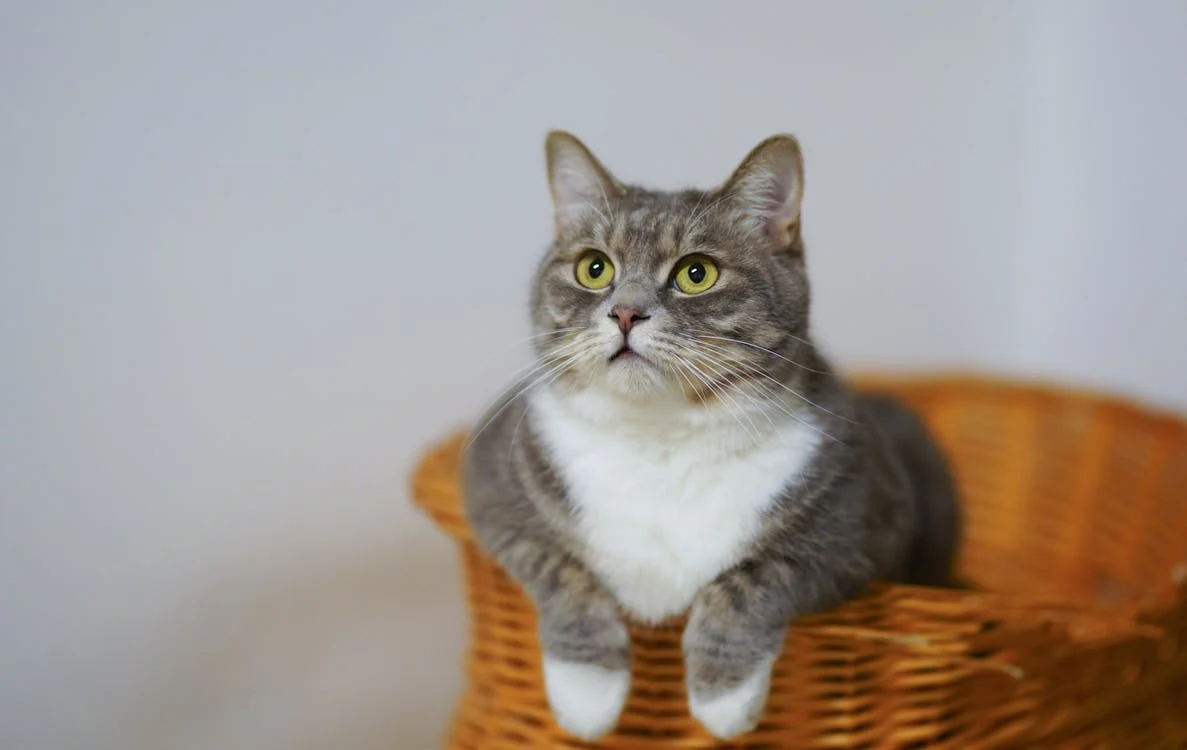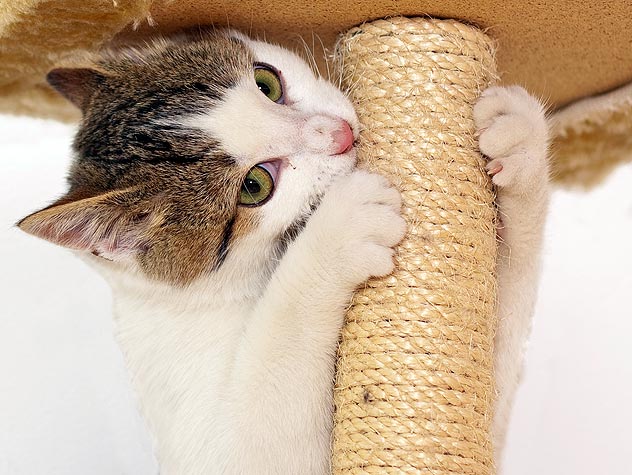Unraveling the Mystery: Exploring the Lifespan and Lifecycle of Pet Cats
If you’re a cat owner or considering bringing a feline friend into your home, you’re likely curious about their lifespan in human years. Recent research published in the Journal of Feline Medicine and Surgery sheds light on this topic, revealing that the average life expectancy for pet cats in the UK is approximately 11.7 years. However, it’s important to note that individual cats can vary widely in their longevity, with some surpassing their teenage years and even reaching their early 20s.
Understanding the factors that influence a cat’s lifespan is crucial. Several variables come into play, including their overall health, weight management, breed, gender, whether they’ve been neutered, and the quality of their living environment. Cats living in optimal conditions with access to nutritious food, regular veterinary care, and a safe and stimulating environment tend to have longer lifespans compared to those facing neglect or health challenges.
Fortunately, the outlook for feline longevity has improved in recent years, thanks to advances in veterinary medicine and increased awareness of proper cat care. With greater access to preventive healthcare, early disease detection, and interventions to address common health issues, domestic cats now have better chances of living longer and healthier lives than ever before.
Sadly though, cats in our care aged 11 years and older take an average of one month to find their new forever homes, over three times longer than kittens who take just eight days.
To show that these older cats still have a lot to give, Cats Protection has launched Mature Moggies Day on 16 June, encouraging people to share inspiring stories of their older cats with #MatureMoggiesDay.
How old is the world’s oldest cat?

The Guinness World Records™ title for the oldest cat alive in 2022 is currently held by Flossie, who is 26 years old. Flossie arrived in the care of Cats Protection Tunbridge Wells, Crowborough & District in 2022. Co-ordinator Naomi Rosling said: “We were flabbergasted when vet records showed Flossie to be nearly 27 years old. She’s the oldest cat I’ve ever met; at least 120 in human years.”
Flossie was rehomed with Vicki Green, in Orpington, who said: “I knew from the start that Flossie was a special cat, but I didn’t imagine I’d be sharing my home with a world record holder. She’s so affectionate, playful and sweet, especially when you remember how old she is. I’m immensely proud that Cats Protection matched me with such an amazing cat.”
Flossie had remained in the same extended family since being homed as a young stray in 1995. She had been living in a colony of cats near a Merseyside hospital, when two workers took pity on them and each homed a cat. They lived together for 10 years until the owner died and Flossie was taken in by her sister. After another 14 happy years, the new owner also passed away. Flossie was aged at least 24 at that time. For the next three years, Flossie lived with the woman’s son, until his situation led him to make the difficult decision to relinquish the family cat to Cats Protection.
Craig Glenday, Editor in Chief at Guinness World Records™ said: “We were so excited to hear about the lovely Flossie and celebrate her long life. It’s not every day you come across a cat who has been around since the mid-nineties. This is the human equivalent of over 120 years old, which would put her on par with Jeanne Calment, the French supercentenarian who lived to 122 years 164 days and holds the record for the oldest person ever.”
The world record for the oldest cat ever is held by Crème Puff, a cat from Texas in the USA who lived to be 38 years and three days old, the longest lifespan of any known domestic cat!
What type of cat has the longest lifespan?
Research on UK pet cats published in the Journal of Feline Medicine and Surgery found that:
- cross-breed cats live on average 1.27 years longer than purebred cats. Find out more about pedigree cats
- female cats live 1.33 years longer than male cats
- lifespan is reduced by 0.02 years for every 100 grams a cat is above their ideal adult weight. This means that being overweight shortens a cat’s life expectancy
- neutered cats live an average of 1.07 years longer than unneutered cats
- Burmese and Birman cats have the longest life expectancy at 14.4 years. Sphynx cats have the shortest life expectancy at 6.8 years
How long are cat years?
Similar to dogs, cat life stages can be roughly equated to human years, meaning that we can calculate a cat’s age both in cat years and human years. However, this is complicated, as cats mature much more in their first human year than they do for the rest of their lives. This is much like humans, who age slower and slower as years go by. Below you will find ages in terms of cat years equated roughly to human years.
- 1 month = 1 human year
- 3 months = 4 human years
- 6 months = 10 human years
- 12 months = 15 human years
- 18 months = 21 human years
- 2 cat years = 24 human years
- 3 cat years = 28 human years
After three years, your cat has developed as much as a 28-year-old human will. After this stage, every cat year equates to around four human years. So, an 11-year-old cat is 60 in human years.

When are cats considered ‘old’ in their lifecycle?
Cats go through six life stages as they grow, and they start to be considered ‘old’ when they reach the ‘mature’ stage at age seven. However, they typically don’t start slowing down until they reach the ‘senior’ stage at 11 years old. The six life stages of a cat’s lifecycle are:
- Kitten (0 to 1 year). This is when cats grow quickest and learn the most about what is safe and unsafe in their environment. A one-year-old kitten is 15 years old in human years
- Junior (1 to 2 years). Cats grow to their full size during this period and continue learning important skills such as playing/hunting. A two-year-old cat is 24 in human years
- Prime (3 to 6 years). This is when cats are in the prime of their lives and usually at their peak of physical fitness. This period covers age 24 to 40 in human years
- Mature (7 to 10 years). Cats start to be considered ‘old’ when they reach this stage, and may start to slow down a bit and put on weight. This is when they’re the human equivalent of being in their mid-40s to mid-50s
- Senior (11 to 14 years). At 14 cats reach the human age of 70, so they may not be as agile as they used to be and their health will need monitoring closely
- Super senior/geriatric (15 years and older). Some cats will reach this stage still with the energy of a kitten, but others will prefer a slower pace of life with lots of comfy spots for snoozing. At 15 years old they’re 76 in human years and reach 100 in human years when they’re 21
How to tell the age of a cat
If you do not know the date a cat was born, then it can be difficult to determine their exact age. For the best estimate of a cat’s age, take them to a vet who will be able to examine their teeth, eyes, coat and other factors to do with their health and body condition to determine roughly how old they are.
How long do indoor cats live?

Cats that go outdoors are more likely to encounter risks such as road traffic accidents, fights with other cats and other dangers that could affect their life expectancy. However, they are also likely to get more exercise as they have more space to roam, which helps to keep them fit and healthy. Currently there is limited evidence to suggest that adopting either an indoor or outdoor lifestyle results in a significantly long lifespan. If you do keep your cat indoors, they’ll need plenty of opportunities to exercise with fun toys they can chase and catch. There are still other risks to indoor cats, so you’ll need to monitor them closely to keep them healthy for longer. Find out more about indoor cats and outdoor cats.
How to help your cat live longer
There are six simple steps you can take to help increase the life expectancy of your cat.
- Get them neutered. Neutered cats tend to live longer. One possible reason for this is that neutered cats are less likely to roam far from home, which decreases the chance of road traffic accidents. Another possible reason is that neutered cats are less likely to have close contact with other cats, which reduces the risk of injury and the spread of disease through fighting or mating. Neutered cats may also be more likely to receive other veterinary care, including vaccinations, to keep them healthy for longer. Find out more about neutering.
- Have regular vet checks. Taking your cat to the vet for a check-up at least once a year will help you catch any health issues early so they can receive effective treatment. Find out more about taking your cat to the vet.
- Get them vaccinated. Making sure your cat is up to date with all their vaccinations will help to protect them from some nasty diseases that could shorten their life. Find out more about vaccinations.
- Encourage exercise. Whether your cat goes outdoors or not, try to spend a little bit of time each day encouraging them to play so they can get some exercise and stay physically fit. Find out more about how to play with your cat.
- Feed a healthy diet. Make sure your cat is eating a complete cat food suitable for their age as this will contain all the nutrients they need for a long and healthy life. Avoid giving too many cat treats as these can be high in calories and cause them to put on weight. Find out more about what you should feed your cat.
- Keep them indoors at night. The risks of your cat being involved in a road traffic accident or fighting with another cat are higher at night, so we recommend keeping them indoors when it’s dark. Find out more about keeping your cat safe outside.




